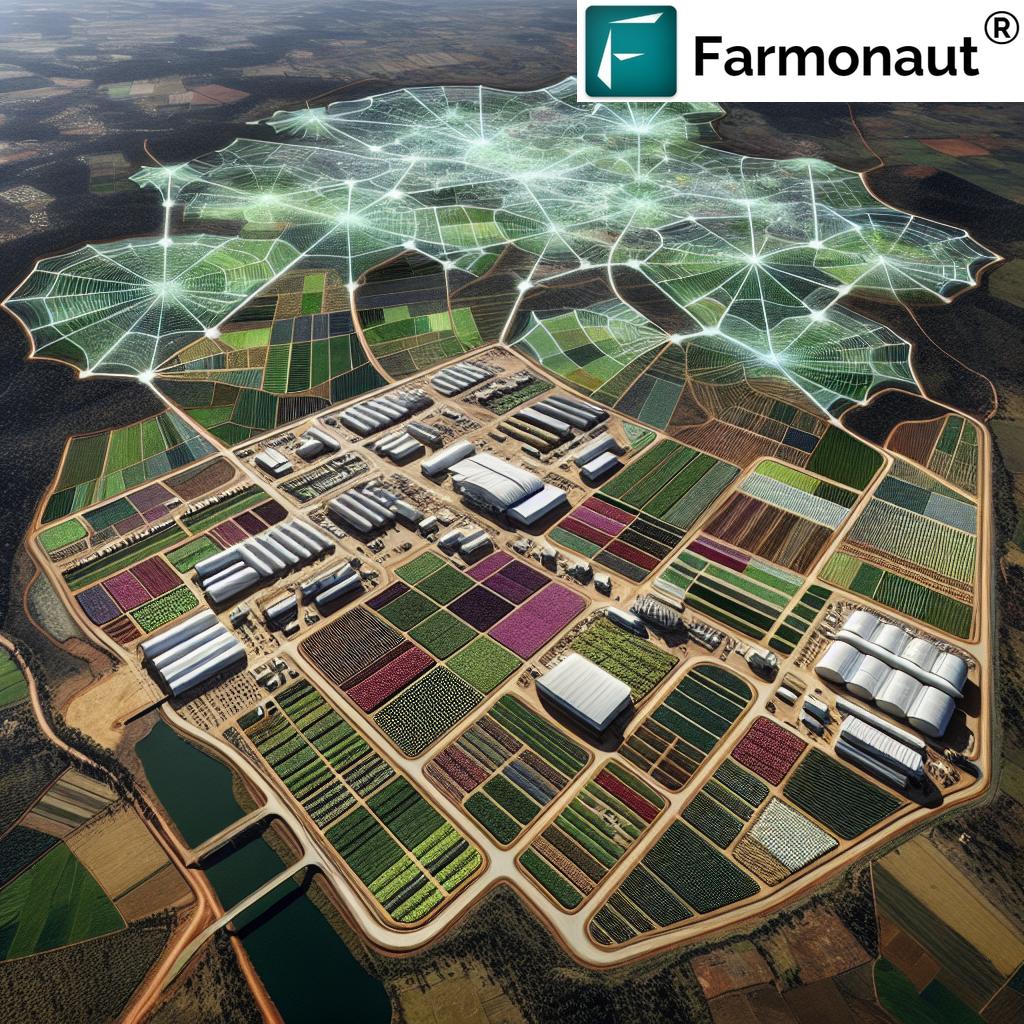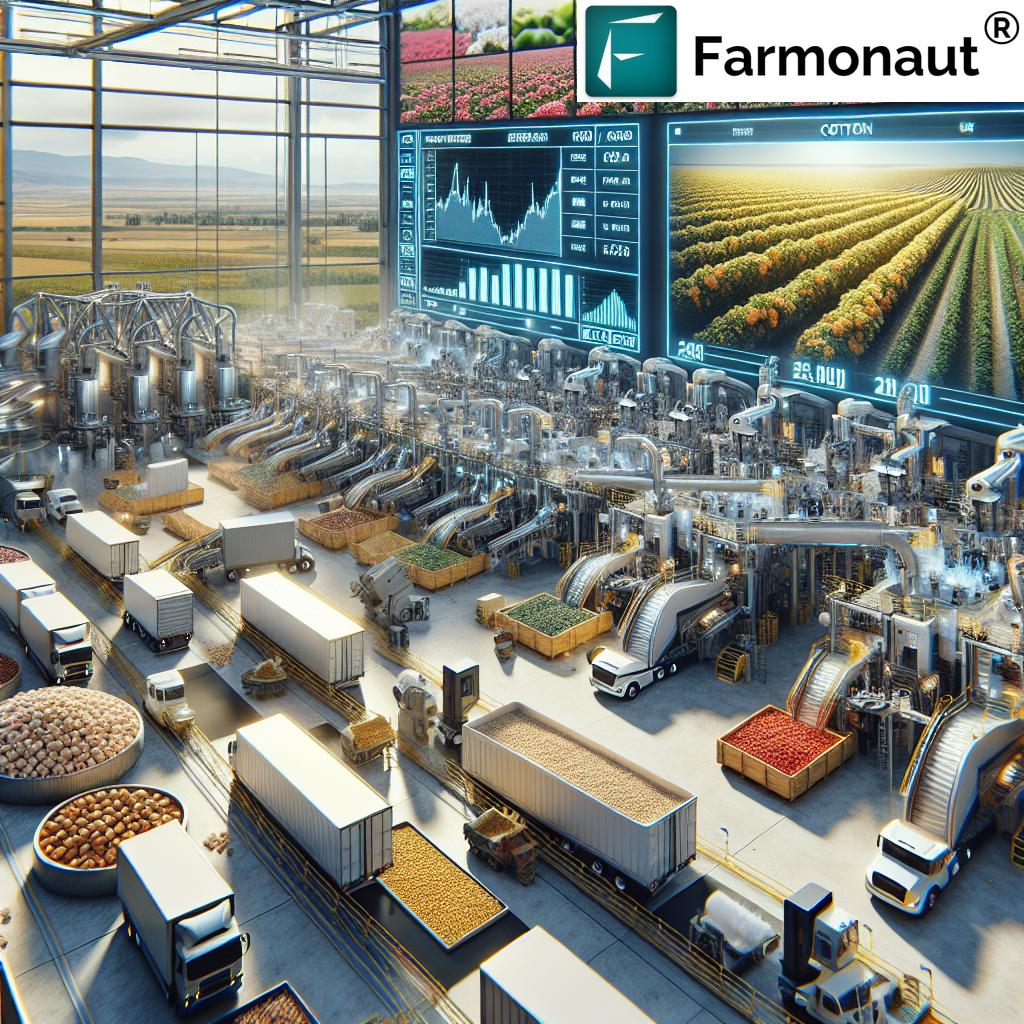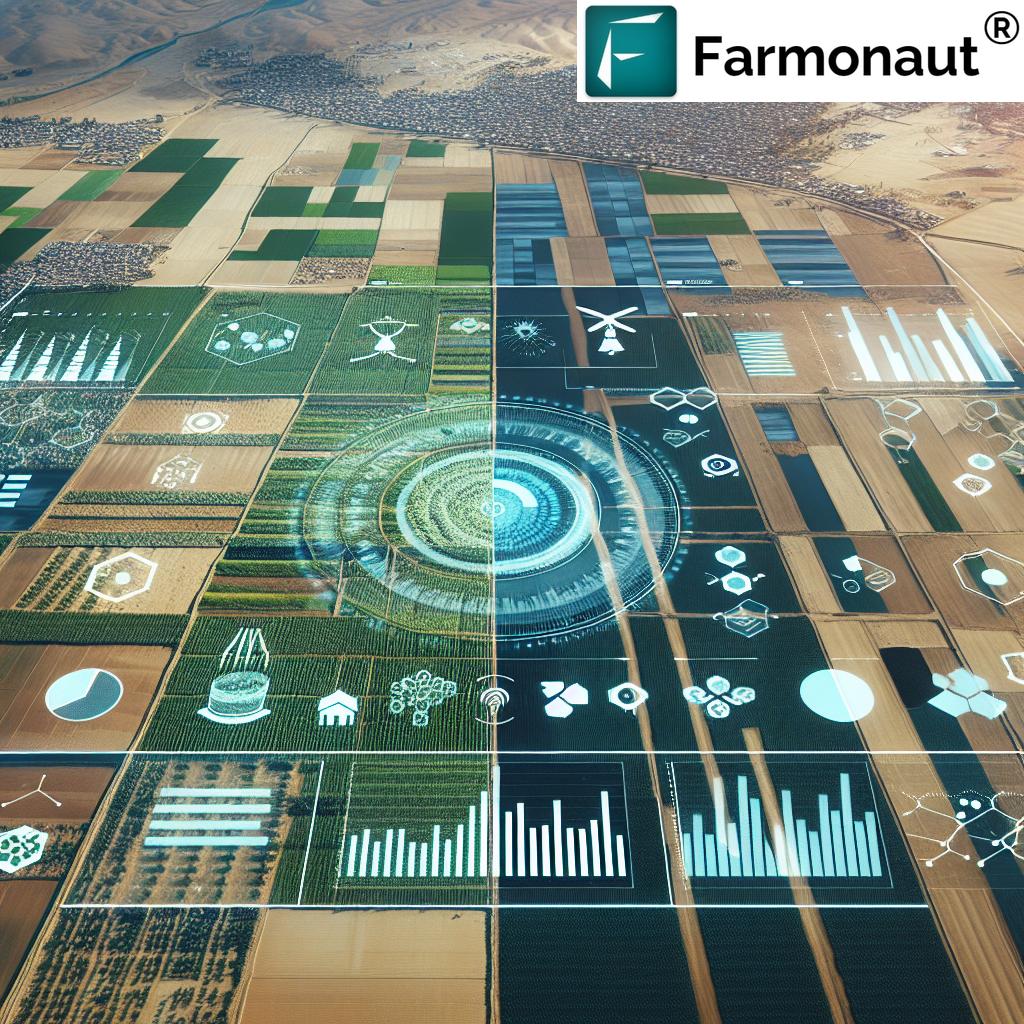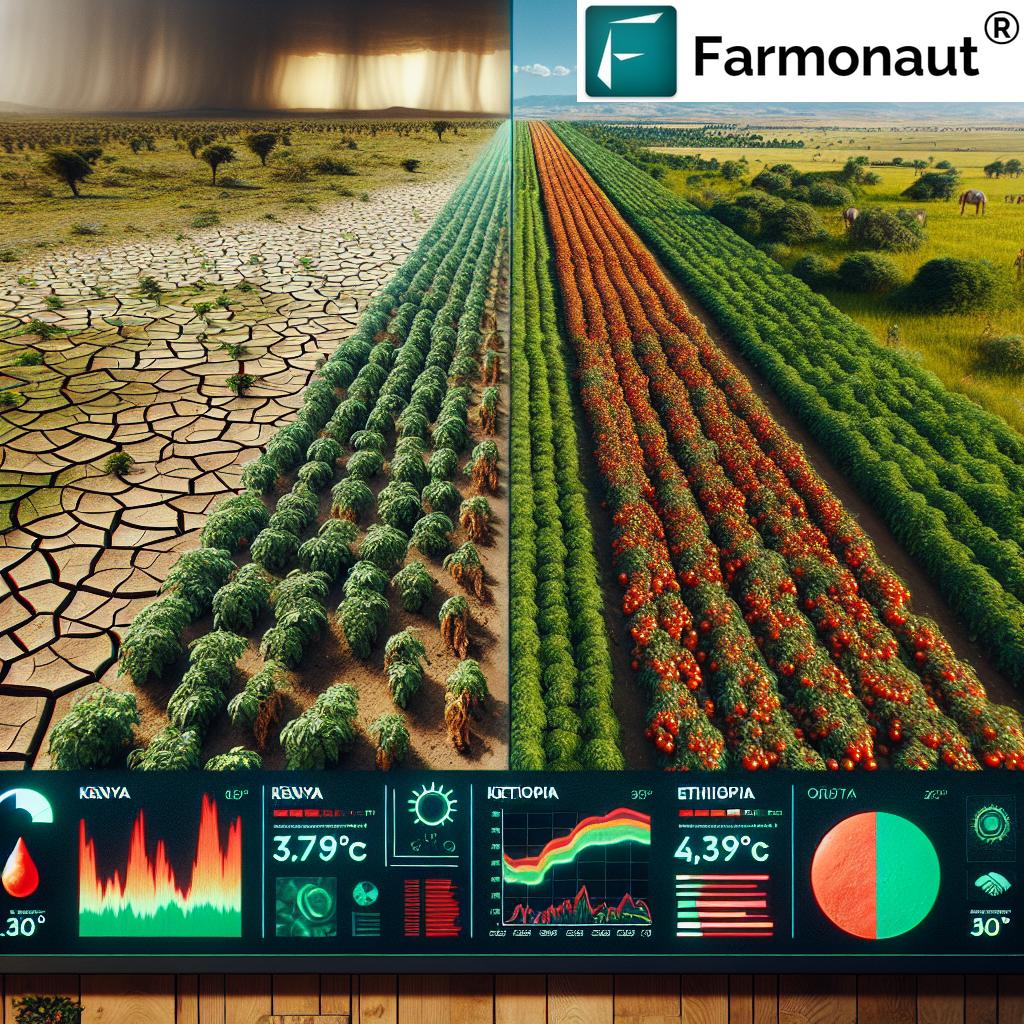Revolutionizing Zimbabwe’s Agriculture: How GIS and Horticulture Aggregation Centers Boost Sustainable Farming
“Zimbabwe’s new horticulture aggregation centers aim to boost productivity for over 1.5 million small-scale farmers.”
In recent years, we’ve witnessed a remarkable transformation in Zimbabwe’s agricultural landscape. The introduction of horticulture aggregation centers and the integration of Geographic Information Systems (GIS) have ushered in a new era of sustainable farming practices and improved market access. This blog post delves into the exciting developments that are reshaping the nation’s horticultural industry and their far-reaching effects on the national economy.
The Dawn of a New Agricultural Era in Zimbabwe
Zimbabwe’s agricultural sector has long been the backbone of its economy, supporting millions of livelihoods and contributing significantly to the country’s GDP. However, challenges such as limited market access, inefficient supply chains, and lack of modern farming techniques have hindered its full potential. The Agricultural Marketing Authority’s recent initiative to establish nationwide horticulture aggregation centers marks a pivotal moment in addressing these challenges.

Understanding Horticulture Aggregation Centers
Horticulture aggregation centers are centralized facilities designed to collect, process, and distribute horticultural products from various farmers in a region. These centers serve as crucial links between farmers and markets, offering numerous benefits:
- Improved Market Access: Small-scale and large-scale farmers can now easily connect with traders, processors, and buyers.
- Quality Control: Centers implement standardized grading and packaging, ensuring consistent product quality.
- Reduced Post-Harvest Losses: Proper storage and handling facilities minimize spoilage and waste.
- Enhanced Bargaining Power: Collective selling through these centers gives farmers better negotiation leverage.
- Access to Information: Farmers receive up-to-date market information and agricultural advisory services.
The Role of GIS in Revolutionizing Zimbabwe’s Agriculture
“GIS technology in Zimbabwe’s agriculture sector has potential to increase crop yields by up to 20% through precise resource management.”
Geographic Information Systems (GIS) have emerged as a game-changer in modern agriculture. In Zimbabwe, the integration of GIS with horticulture aggregation centers is creating a synergy that’s propelling the sector forward. Here’s how GIS is making a difference:
- Precision Farming: GIS enables farmers to optimize crop placement, irrigation, and fertilizer use based on detailed soil and topographic data.
- Yield Prediction: By analyzing historical data and current conditions, GIS helps predict crop yields more accurately.
- Resource Management: Farmers can better manage water resources and minimize environmental impact through GIS-based planning.
- Pest and Disease Management: Early detection and targeted treatment of crop diseases are possible through GIS mapping.
- Supply Chain Optimization: GIS aids in planning efficient routes for product collection and distribution from aggregation centers.
To leverage the power of GIS in agriculture, farmers and agricultural professionals can utilize advanced tools like those offered by Farmonaut. Their satellite-based farm management solutions provide valuable insights for crop health monitoring and resource optimization.

Impact on Small and Large-Scale Farmers
The implementation of horticulture aggregation centers and GIS technologies is having a profound impact on both small and large-scale farmers in Zimbabwe:
Small-Scale Farmers
- Increased Market Participation: Aggregation centers provide a reliable outlet for produce, encouraging more small-scale farmers to engage in commercial horticulture.
- Access to Technology: GIS tools, once out of reach, are now accessible through community initiatives and mobile applications.
- Knowledge Transfer: Farmers benefit from shared best practices and agricultural extension services at aggregation centers.
Large-Scale Farmers
- Economies of Scale: Aggregation centers allow large farms to reduce transportation and marketing costs.
- Data-Driven Decision Making: Advanced GIS capabilities enable large-scale operations to fine-tune their production strategies.
- Export Opportunities: Improved quality control and traceability open up new export markets for large producers.
Sustainable Farming Practices
The integration of GIS and horticulture aggregation centers is promoting sustainable farming practices across Zimbabwe:
- Water Conservation: GIS-based irrigation planning helps reduce water waste and promotes efficient use of this scarce resource.
- Soil Health Management: Precise application of fertilizers and crop rotation strategies improve soil fertility over time.
- Biodiversity Preservation: Mapping of ecosystems allows for better planning to protect local flora and fauna.
- Carbon Footprint Reduction: Optimized transportation routes and reduced food waste contribute to lower carbon emissions.
Farmers looking to implement sustainable practices can benefit from Farmonaut’s advanced agri-solutions, which offer insights into crop health and resource management.
Download Farmonaut’s Android App

Agricultural Supply Chain Management
The establishment of horticulture aggregation centers has revolutionized agricultural supply chain management in Zimbabwe:
- Streamlined Logistics: Centralized collection points reduce transportation complexity and costs.
- Improved Traceability: From farm to consumer, products can now be tracked more effectively, ensuring food safety and quality.
- Reduced Post-Harvest Losses: Better storage facilities and quicker market access minimize spoilage.
- Enhanced Market Information: Real-time data on supply and demand helps balance market forces.
Horticultural Product Distribution System
The new distribution system facilitated by aggregation centers is transforming how horticultural products reach consumers:
- Direct Market Linkages: Farmers can now connect directly with retailers and processors, bypassing intermediaries.
- Standardized Grading: Uniform quality standards ensure consistent product offerings across markets.
- Cold Chain Management: Improved cold storage facilities at aggregation centers maintain product freshness.
- Value Addition Opportunities: On-site processing facilities allow for the creation of value-added products.

Economic Implications for Zimbabwe
The integration of GIS and horticulture aggregation centers is poised to have significant economic implications for Zimbabwe:
- Increased Export Potential: Improved quality and consistency open up new international markets for Zimbabwean produce.
- Job Creation: The expansion of the horticultural sector creates employment opportunities across the value chain.
- Rural Development: Increased agricultural productivity stimulates economic growth in rural areas.
- Foreign Exchange Earnings: Higher horticultural exports contribute to Zimbabwe’s foreign exchange reserves.
Food Security Enhancement
The initiatives are also playing a crucial role in enhancing food security in Zimbabwe:
- Increased Production: GIS-driven precision farming leads to higher yields and more stable food supply.
- Reduced Waste: Better storage and distribution systems ensure more produce reaches consumers.
- Crop Diversification: Aggregation centers encourage farmers to grow a wider variety of crops, improving nutritional security.
- Climate Resilience: GIS helps in planning for and mitigating the effects of climate change on agriculture.
Agritech Solutions Empowering Farmers
The agricultural revolution in Zimbabwe is being further accelerated by the adoption of various agritech solutions:
- Mobile Apps: Farmers can access market prices, weather forecasts, and agricultural advice on their smartphones.
- IoT Sensors: Internet of Things devices monitor soil moisture, temperature, and other crucial parameters in real-time.
- Drone Technology: Aerial imaging provides detailed crop health information and aids in precision agriculture.
- Blockchain: Ensures transparency and traceability in the agricultural supply chain.
Farmonaut’s suite of agritech solutions, including their mobile apps and API services, are at the forefront of this technological revolution in agriculture.

Challenges and Future Prospects
While the progress is impressive, several challenges remain:
- Infrastructure Development: Continued investment in rural roads and electricity is needed to support aggregation centers.
- Farmer Education: Ongoing training is essential to help farmers adopt new technologies and practices.
- Policy Support: Government policies must evolve to support the growth of the horticultural sector.
- Climate Change Adaptation: Strategies to mitigate the impact of changing climate patterns on agriculture are crucial.
Despite these challenges, the future of Zimbabwe’s agricultural sector looks promising. The combination of horticulture aggregation centers and GIS technology is set to drive sustainable growth, improve food security, and boost the national economy.
Impact of Horticulture Aggregation Centers in Zimbabwe
| Key Metrics | Before Aggregation Centers | After Aggregation Centers | Percentage Change | GIS Role |
|---|---|---|---|---|
| Small-scale Farmer Participation | 40% | 65% | +62.5% | Crop monitoring and advisory |
| Large-scale Farmer Participation | 70% | 85% | +21.4% | Precision agriculture techniques |
| Market Access (% of farmers) | 45% | 75% | +66.7% | Supply chain optimization |
| Average Crop Yield (tons/hectare) | 2.5 | 3.8 | +52% | Soil and climate analysis |
| Supply Chain Efficiency (days to market) | 7 | 3 | -57.1% | Route optimization |
| Economic Impact (USD millions) | 150 | 250 | +66.7% | Data-driven decision making |
This table clearly illustrates the transformative impact of horticulture aggregation centers and GIS technology on Zimbabwe’s agricultural landscape. The significant improvements across various metrics underscore the success of this initiative in boosting sustainable farming and economic growth.
Leveraging Technology for Agricultural Progress
As we’ve seen, the integration of technology plays a crucial role in advancing Zimbabwe’s agricultural sector. Platforms like Farmonaut offer valuable tools for farmers and agricultural professionals to harness the power of satellite imagery and data analytics.
Explore Farmonaut’s API Services
For developers and businesses looking to integrate advanced agricultural data into their systems, Farmonaut’s API services provide a wealth of opportunities. From crop health monitoring to weather forecasting, these APIs can enhance agricultural applications and decision-making tools.
Access Farmonaut’s API Developer Docs
Conclusion
The revolution in Zimbabwe’s agricultural sector, driven by the establishment of horticulture aggregation centers and the integration of GIS technology, marks a new chapter in the country’s economic development. By enhancing market access, improving supply chain efficiency, and promoting sustainable farming practices, these initiatives are set to transform the lives of millions of farmers and contribute significantly to national food security and economic growth.
As we look to the future, the continued adoption of agritech solutions and the expansion of aggregation centers will play a pivotal role in realizing Zimbabwe’s agricultural potential. With the right support and ongoing innovation, Zimbabwe is poised to become a model for agricultural development in Africa and beyond.
FAQ Section
- Q: What are horticulture aggregation centers?
A: Horticulture aggregation centers are facilities that collect, process, and distribute horticultural products from various farmers in a region, serving as crucial links between farmers and markets. - Q: How does GIS technology benefit farmers in Zimbabwe?
A: GIS technology helps farmers optimize crop placement, predict yields, manage resources efficiently, detect pests and diseases early, and plan efficient supply chains. - Q: What impact do these initiatives have on small-scale farmers?
A: Small-scale farmers benefit from increased market participation, access to technology, and knowledge transfer through community initiatives and aggregation centers. - Q: How do horticulture aggregation centers improve supply chain management?
A: These centers streamline logistics, improve traceability, reduce post-harvest losses, and enhance market information flow, making the supply chain more efficient. - Q: What role does technology play in this agricultural revolution?
A: Technology, including mobile apps, IoT sensors, drone technology, and blockchain, empowers farmers with real-time data, precision agriculture capabilities, and improved traceability in the supply chain.













